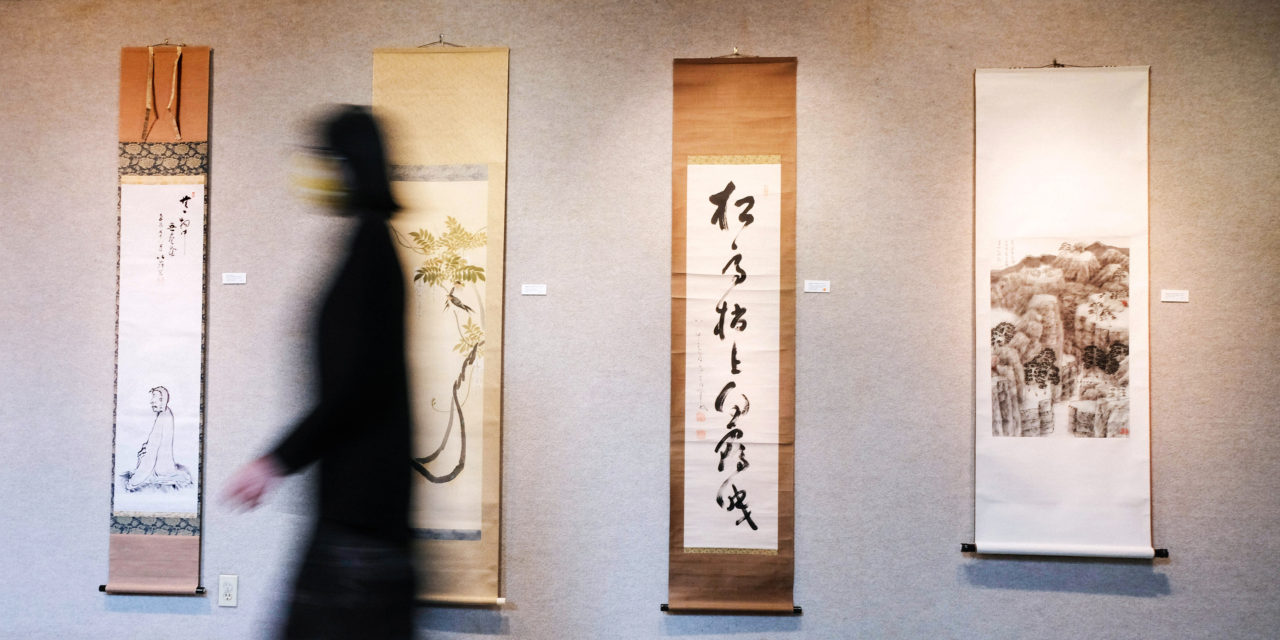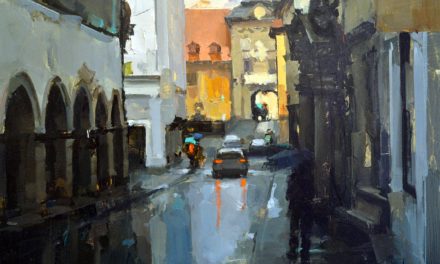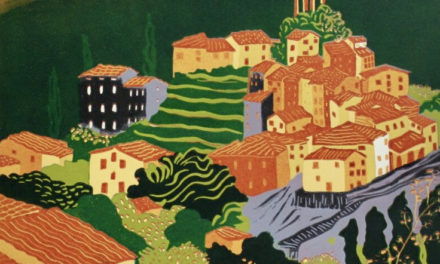(Above: From the Stave to the Dowel: Asian Hanging Scrolls is the title of an exhibit on display at the White Lotus Gallery through Sept. 18, 2021; photos by Paul Carter.)
By Randi Bjornstad
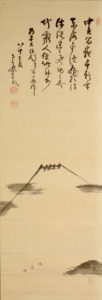
A scroll titled Mt. Fuji, by Japanese artist Nakahara Nantenbo
A large selection of Chinese and Japanese scrolls hangs on the walls of the White Lotus Gallery through Sept. 18, their serenity offering a soothing respite from what seems to be a continual daily bombardment of news about pandemic, politics, and planetary ills.
Some of the scrolls have wooden boxes sitting on the floor beneath them, and that’s usually an indication that they are by Japanese artists, gallery owner Hue-Ping Lin said.
“Japanese scrolls usually come with their own storage boxes, and part of the reason is that in Japan scrolls are often rotated with the season,” she said. “Since this show happened in summer, we included many scrolls to reflect the season.”
In Japan, scrolls often are placed in the entryway of the home, accompanied by flower arrangements and a set of teapot and cups used in a traditional tea ceremony, Lin said.
The feeling of peaceful stillness that emanates from most scrolls is no mistake — the scrolls of both countries are intended to encourage reflection and meditation. In particular, Chinese scrolls may consist solely of poems presented as calligraphy. In both countries, scrolls often include calligraphic poems as well as elements of nature such as mountains, flowers and birds.
These artistic elements on scrolls are called “literati art,” and they are intended to reflect not just a place but the internal philosophy, character, and values of the artist. Many were not created for show or sale.
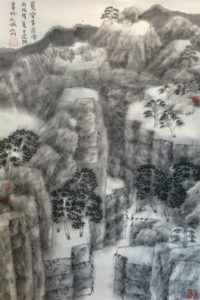
Summer Clouds, a scroll painting by painted by Chinese artist Zhang Jianyang
“They were done more to commemorate events and relationships,” Lin said. “Many originally were given as gifts to friends and relatives. Many of the people who did them did not even consider themselves to be artists.”
One scroll artist in particular, whose scroll called Quiet Canyon is on display, “didn’t want to be an artist; he just wanted to go out and climb in the mountains and then go back and paint,” she said. “His work was not intended to be realistic, more his interpretation and his memory of what he saw in nature.”
Like all the artists whose work is on display, his name is given next to his work as his surname followed by a comma and then his given name, in his case as “Zhang, Jianyang.” This reflects the custom of China, Japan, Korea, and Vietnam, which is to put the family name first, although without a comma to separate them.
From the Stave to the Dowel: Asian Hanging Scrolls
When: Through Sept. 18, 2021
Where: White Lotus Gallery, 767 Willamette St., Eugene
Hours: 10 a.m. to 4 p.m. Tuesday through Saturday
Information: Telephone 541-345-3276; email Lin@wlotus.com; online at wlotus.com
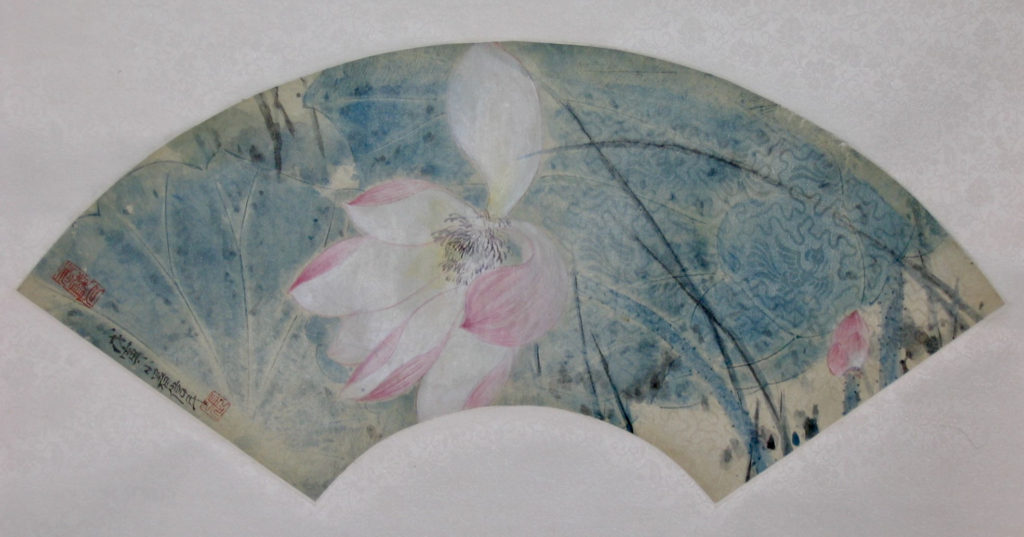
Lotus, a fan painting by Chinese artist Zhang Weimin

